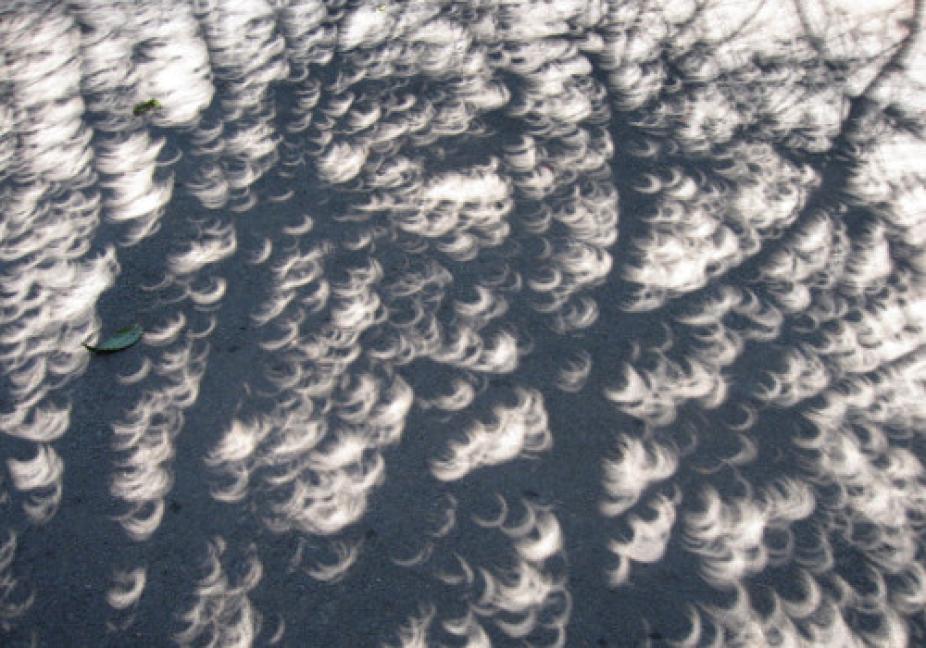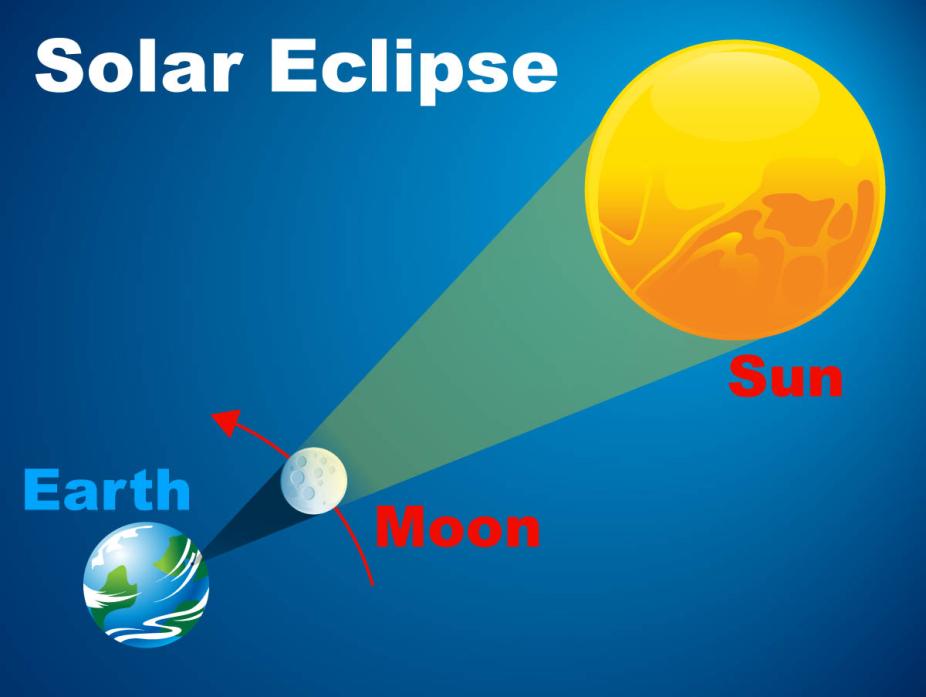What is an eclipse?
Periodically the Moon will move directly in front of the the Sun. When it does, it blocks the light coming from the Sun. If it blocks out the Sun totally, we call this a total eclipse. If the Moon only blocks part of the Sun, it is a partial eclipse.

A partially-eclipsed Sun shining through leaves creates crescents of light.
During a partial eclipse, you can still see part of the Sun behind the Moon, so you must not look at it. But, if you look at shadows from the leaves in trees you'll see they appear crescent shaped. Ask your teacher to make a pinhole camera, or project an image of the Sun using a mirror, and you'll be able to see the Moon blocking the Sun.
During a total eclipse, the bright Sun is completely blocked. At this time, the outer atmosphere of the Sun, or corona, becomes visible. During this brief occurrence, you can look at the corona with your eyes, because it is a million times dimmer than the Sun. Be very careful though—even the slightest portion of the Sun poking past the edge of the Moon can hurt your eyes!
As you may know, the Moon is much smaller than the Earth, and it cannot block the Sun from the whole Earth at once. For this reason, eclipses only affect a small portion of the Earth's surface when they occur.

NASA
By the way, during a total eclipse, the stars are also visible!